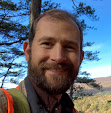Winter solstice has arrived. The stillness of the sleepy forest invites the cultivation of interior stillness for the human wanderer. The space of nothingness that’s left where mental chatter and obsessive desire are allowed to settle is the place where peace and joy will make a home. May the love, simplicity, peace, joy, and compassion in our hearts be magnified in proportion to the duration and intensity of light from now to the solstice of summer.
Kindling Neighborly Connections between People and Nature.
About Me

- Rich Hanlon
- Rich is a nature guide and environmental educator with experience guiding in Pennsylvania and New York. He is a 2009 graduate of Penn State University's Environmental Studies program, a fully insured New York State Licensed Guide, and a Certified Interpretive Guide through the National Association for Interpretation. Rich has a passion for revealing nature's relationships and he wants to help you discover yourself in the gift, the adversity, and the wonder of wild nature.
Wednesday, December 21, 2022
Tuesday, October 11, 2022
Current Nature Attraction: Snow Geese in Malone, NY
The geese that show up at Malone Rec Park between October and November are enroute to somewhere in the continental US where they'll spend their winter. Many will end up in the Chesapeake Bay. Just think, the snow geese who make a home in the Arctic Tundra in the summer and the Chesapeake in the winter offer visitors to Malone Rec Park like you and me a glimpse into two very different landscapes through our observation of the birds who call these places home.
This migration stopover goes back generations for the snow geese. It's part of a travel route that young geese have learned from their goose elders. It's an amazing spectacle that you can enjoy too. If you are there in the morning, you'll get to see hundreds of geese descending from the skies as they come in for a landing on the lake. If you're there in the afternoon, you'll get to see the lake covered by thousands of geese. If you're there in the evening, you'll get to watch them take flight in groups to continue their migration southward.If you'd like to learn more about the geese and their habits, or even get some help looking for rarities such as Cackling goose and Ross's goose (far from guaranteed!), think about hiring a Birding Guide. Wild Neighbors Nature Connection is an Adirondack Guide service that can help to enrich your Snow Goose experience. For a full look at Wild Neighbors Nature Connection offerings, visit www.wnnc.net, and check out the experiences tab.
Tuesday, September 20, 2022
The Way of the Whirligig Beetle
In the misty morning air,
Raindrops ride the skies under gravity's tug.
Perched on a rock at pond's edge,
I watch wind rock limbs of overhanging trees.
Raindrops drip,
Surface ripples.
Beetle sized waves collide, coalesce.
Whirligigs whirl about, ride, and spiral upon the water's tension,Their path unimpeded by stormy sea.
Over, around, and through the waves,
They've plotted a course.
They'll see it through.
A resolute way to journey through life.
The way of the Whirligig Beetle.
Saturday, July 23, 2022
To Be a Moth in the Forest
Monday, July 11, 2022
Decomposing Log Communities
When you're out hiking the trails it's often the visible animals like toads, snakes, and birds that capture our attention.
When the diet of animals like toads, snakes, and birds is considered it becomes clear just how important it is that there are healthy decomposing logs in our forests. Without the decomposing logs that host a buffet of arthropods, larger insectivorous animals would not have enough food. You can help by following Leave No Trace Principles the next time you build a campfire.One of the Leave No Trace principles is to minimize campfire impacts by gathering firewood that is dead, down, dinky, and distant. Dead and down means 1) no longer living and 2) on the ground. Dinky and distant means 1) smaller than your wrist in circumference and 2) collected at least 200 feet from your designated campsite.By following these Leave No Trace Principles in this way you can help to make sure that there will be community-supporting decomposing log communities all throughout our forests, even in proximity to designated campsites in the Adirondack Park.















